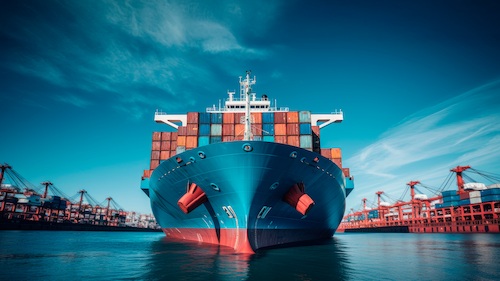With over 11,000 kilometres1 of coastline and a strategic location along major global shipping routes, India is well-positioned by geography to play a leading role in maritime trade and manufacturing. Nearly 95% of India's EXIM trade by volume already moves by sea2, reflecting the sector's central importance to the economy. As the global shipping industry shifts towards cleaner and smarter technologies, this is a crucial moment for India to capitalise on both its geographic strengths and its vast workforce to build a modern, competitive shipbuilding industry.
Globally, the shipbuilding industry is changing fast. Ships are aging, environmental regulations are becoming stricter, and there is growing demand for vessels that use less fuel and advanced digital systems. According to the United Nations Conference on Trade and Development (UNCTAD), global maritime trade is expected to grow by about 2.4% each year3, with container shipping growing even faster at 2.7%. This means more ships will be needed, but they must now be cleaner and more efficient. India has over 40 shipyards building everything from navy vessels to offshore ships, but currently, India ranks just above 16th in the world in shipbuilding capacity4. This means India has plenty of room to grow and improve.
The global shipbuilding market has long been dominated by countries like China, South Korea, and Japan, which have benefited from sustained policy support, financial incentives, and well-established industrial clusters. However, India is now poised for significant growth in this sector. Economically, the country spends billions annually on hiring foreign vessels to transport its goods. With exports projected to reach $1 trillion by 20305, strengthening domestic shipbuilding would reduce this dependency, retain value within the country and create jobs. Strategically, India's location along key international shipping routes gives it a geographic advantage. As East Asian shipyards become increasingly congested, India can emerge as a viable alternative for global buyers—not just for medium-sized and specialised vessels, but across a broad range of ship types. Furthermore, with the global shift toward greener maritime technologies—such as LNG, electric, and hybrid-powered ships—India has an opportunity to build cutting-edge vessels from the ground up. With the right investments and policy support, India can position itself as a competitive, full-spectrum shipbuilding hub on the global stage.
However, there are several challenges. Many government-run shipyards focus mainly on defence contracts and don't have the capacity for commercial ships. Private shipyards often lack advanced technologies like robotic welding or digital design tools. India also imports many important materials such as marine-grade steel and navigation equipment, which raises costs and causes delays. Shipyards often operate in silos without shared infrastructure, missing out on cost efficiencies and collaboration.
These challenges show that India's shipbuilding industry needs a complete ecosystem—one that includes finance, infrastructure, skilled workers and a strong supply chain. To address this, the Government has introduced several policies and programs6. Giving shipyards infrastructure status makes it easier for them to secure long-term loans. Customs duty exemptions reduce costs on key materials. Among the most impactful recent moves is the creation of the $2.9 billion Maritime Development Fund7, which offers affordable long-term financing for shipbuilding projects. The Government is also preparing to launch Shipbuilding Financial Assistance Policy 2.0, which will provide an estimated $2 billion8 in support, with a strong emphasis on eco-friendly and high-tech vessels. There is a plan for development of shipbuilding clusters in maritime states, identified based on their port connectivity, local manufacturing ecosystems, and overall industrial readiness. These clusters will be equipped with shared testing labs, design centres, and production facilities to improve economies of scale and collaboration across shipyards.
The broader investment outlook for India's shipbuilding ecosystem remains promising. There are expanding opportunities across the value chain—from ship design and shipyard modernisation to recycling infrastructure, component manufacturing, special-purpose vessel construction, and green shipping technologies. These segments represent high-potential entry points for both domestic and foreign investors looking to capitalise on India's competitive cost base, resource availability, and policy-driven growth trajectory.
India's shipbuilding future is not just about building more ships—it's about building better ships that are cleaner, smarter, and more cost-effective. With the right mix of policies, investments, and skilled talent coming together, the shipbuilding industry is poised to significantly boost the economy and help India emerge as a formidable maritime power on the global stage.
For a detailed analysis of the global and Indian shipbuilding landscape, and to understand the opportunities and challenges shaping the sector's future, Invest India, in partnership with ASCELA, has conducted an in-depth study. This report offers valuable insights into how India can strategically leverage its strengths to emerge as a key player in the global shipbuilding industry. The full report can be accessed here.
This blog is written by Rhea Nakwal

